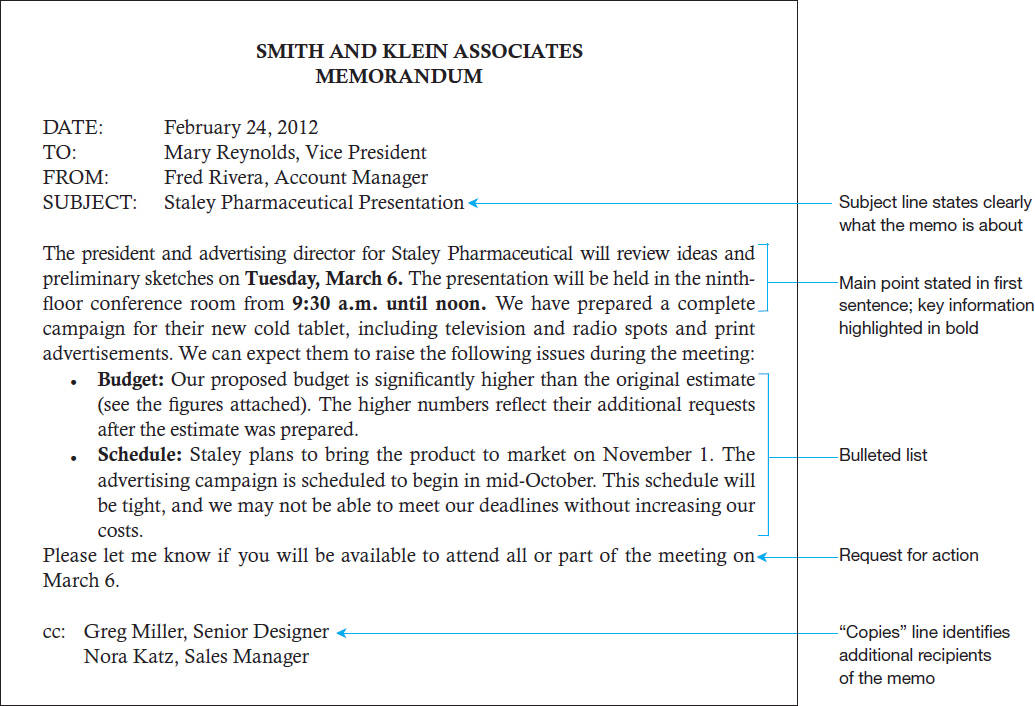Memos
Printed Page 652
Memos, such as the one shown in Figure 22.1 (and many others that are now sent by e-mail), are documents sent between employees of the same organization. Typically, memos are
Printed Page 653
- brief, to the point, and focused on a single subject; if readers will need additional information, memos may refer to other documents, such as reports and spreadsheets, to which the recipients have access (if the memo is sent as an e-mail message, these supporting documents may be attached).
- written in short paragraphs, sometimes of only a single sentence, with the main point stated succinctly in the first paragraph
- framed in terms of how the information contained in the memo will affect its readers; if readers are expected to take action in response to the memo, for example, then the memo should state clearly what readers are to do and when

FIGURE 22.1 A Sample Memo
The following conventions for formatting a memo are well established and should rarely be altered. In addition, some organizations have specific guidelines for memos (such as the use of letterhead).
Printed Page 654
- Heading. A memo should carry the major heading Memorandum or Memo. If you are using letterhead stationery, position the heading just below the letterhead. The heading may be centered on the page or positioned at the left margin (depending on your organization’s guidelines). In either case, the heading should be distinguished in some way from the rest of the body text, such as by a large font size, boldface type, or capital letters.
- Content headings. Just below the heading and separated by at least one line of space are the content headings: Date, To, From, and Subject. Type them at the left margin, in the same size font as the body text. The subject heading is a crucial guide for readers, so always include an accurate subject heading.
- Body text. The main text of a memo is usually presented in block style: single-spaced with an extra line of space between paragraphs. (Do not indent the first line of paragraphs in block style.) Call attention to specific information by presenting it in a numbered or bulleted list, and highlight the information visually by using boldface or extra white space above and below it. In a memo announcing a meeting, for example, you might boldface the date, time, and place of the meeting so the reader can quickly find the information, or you might set off the date, time, and place on separate lines.